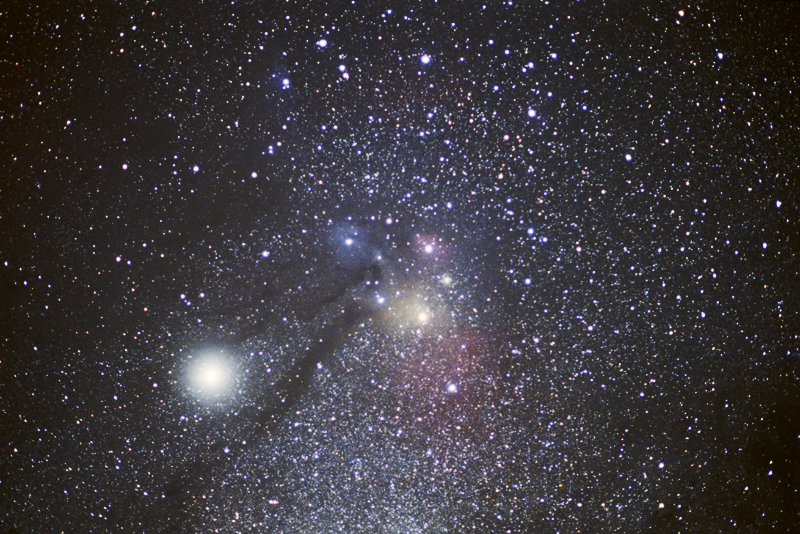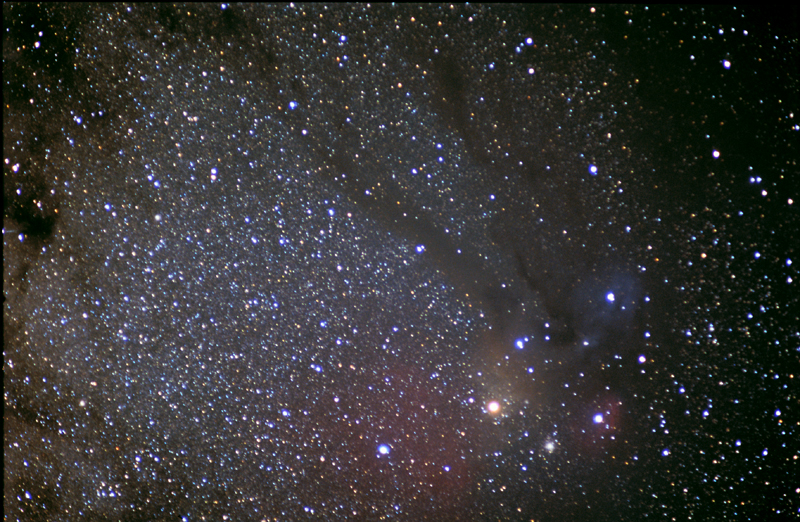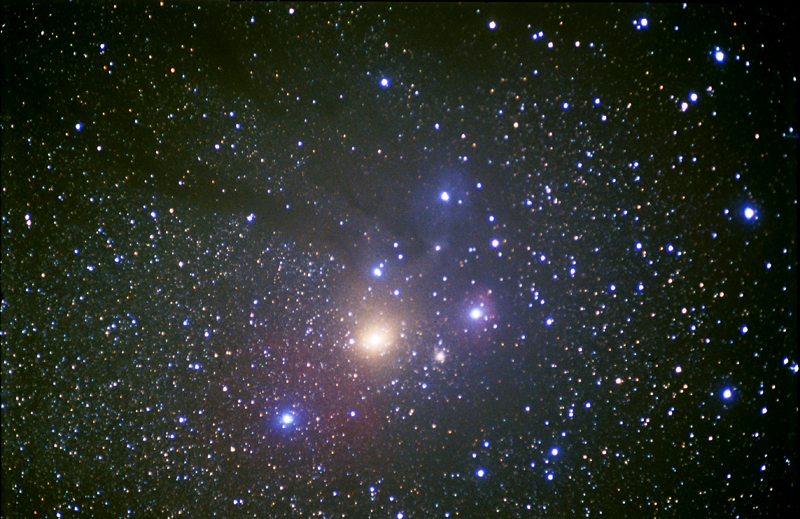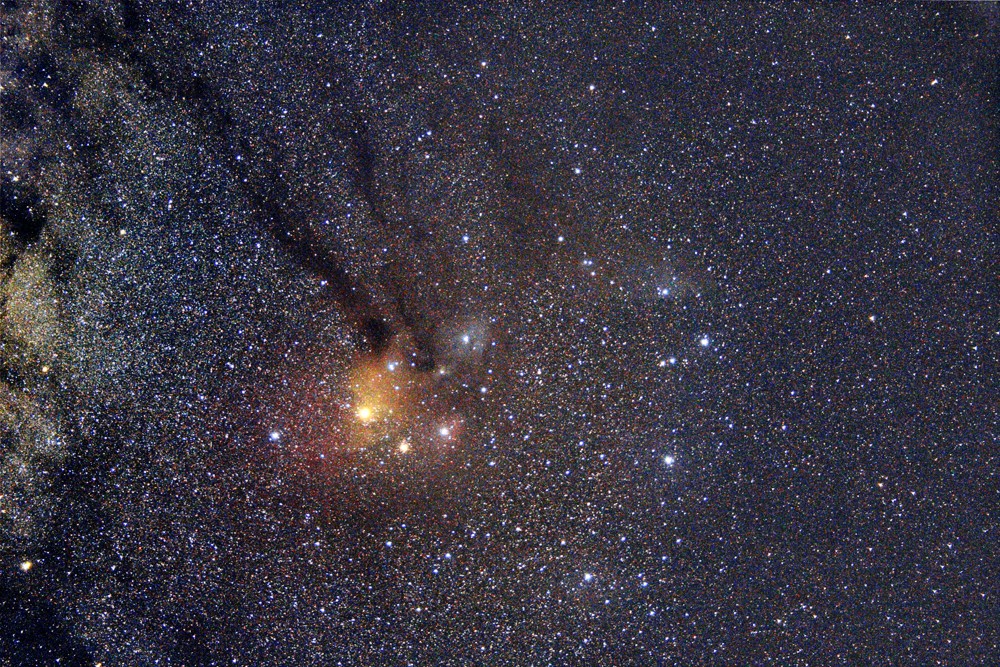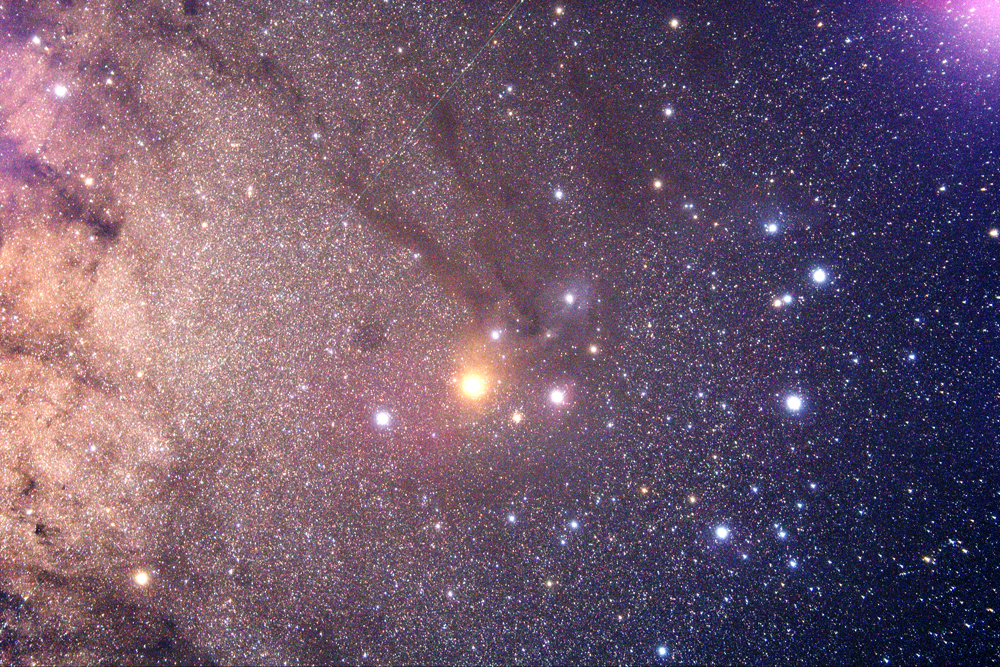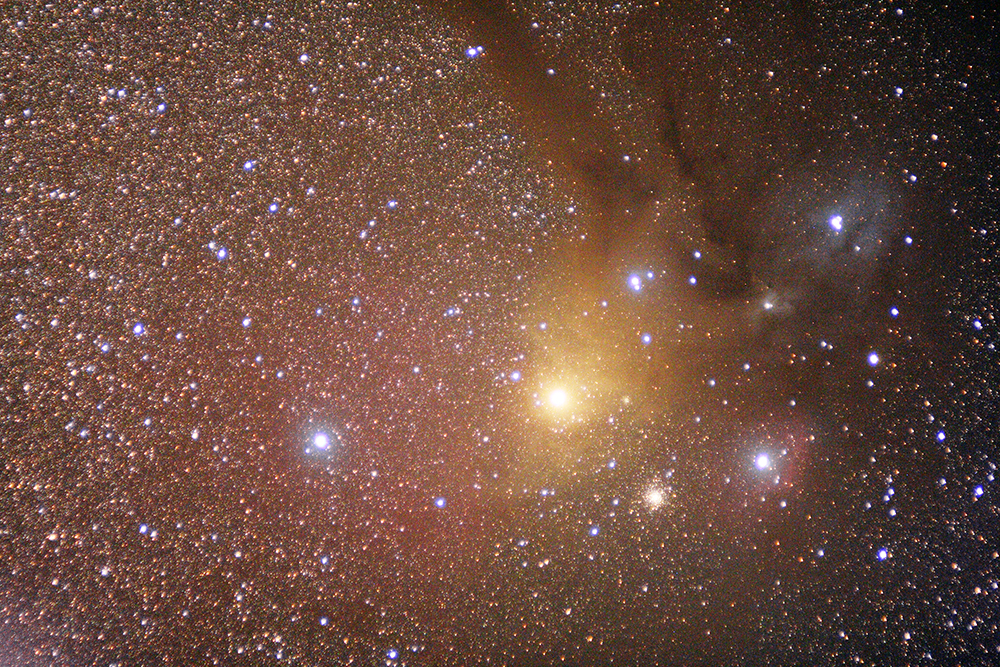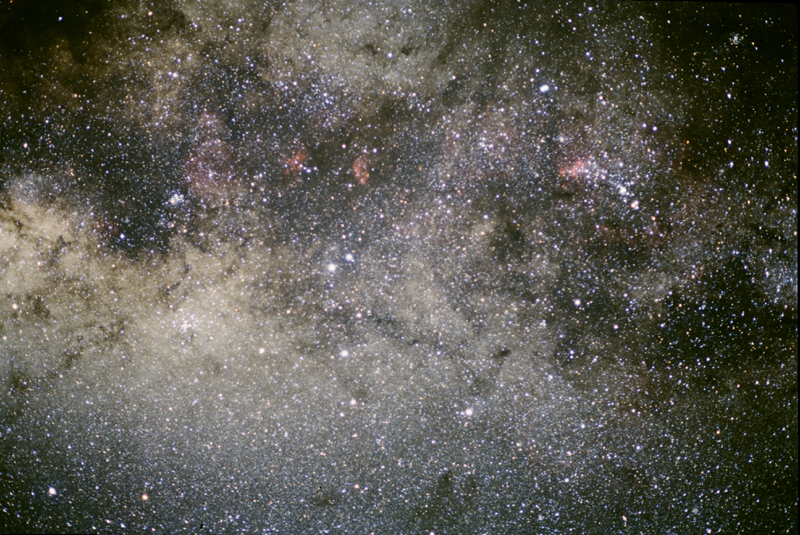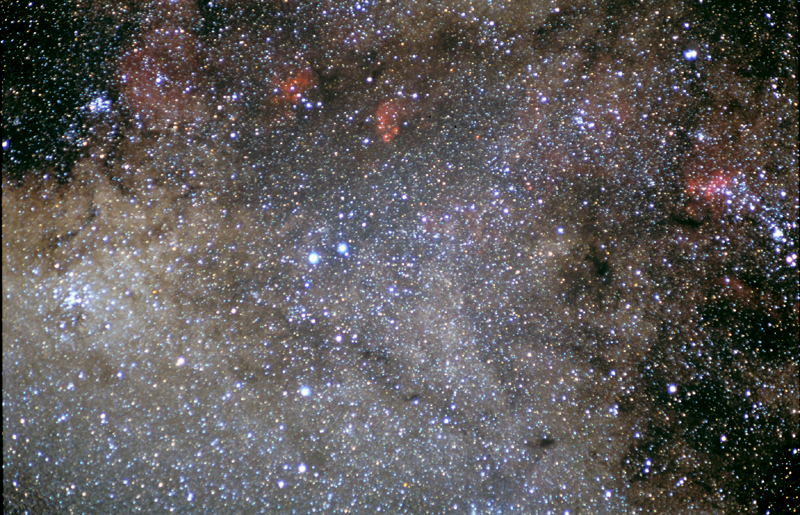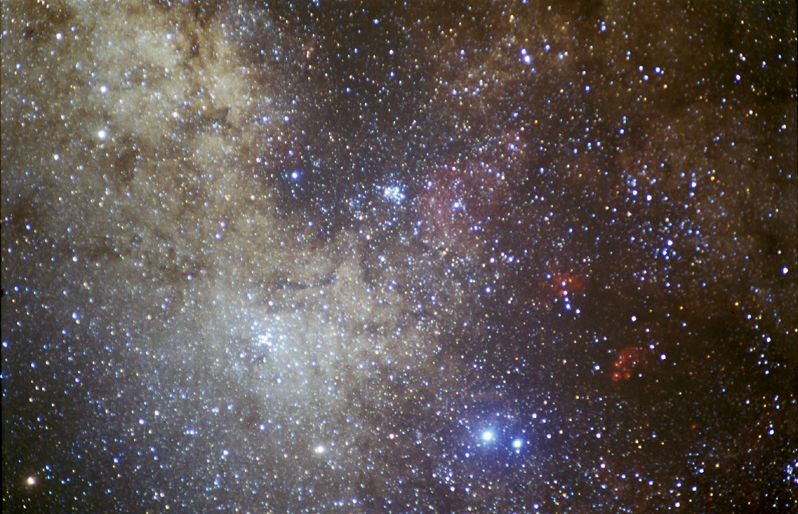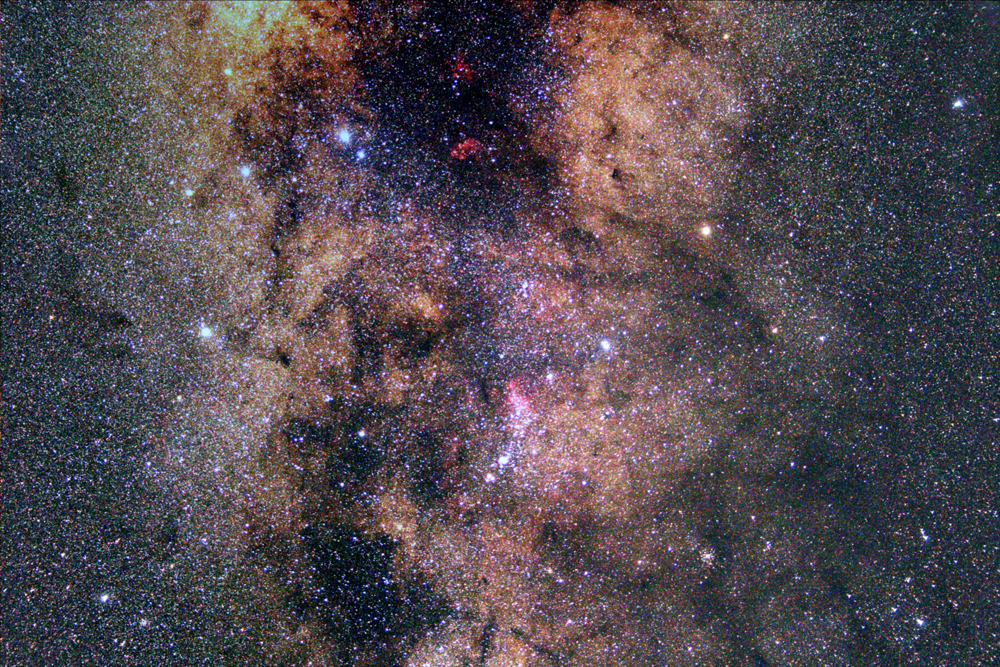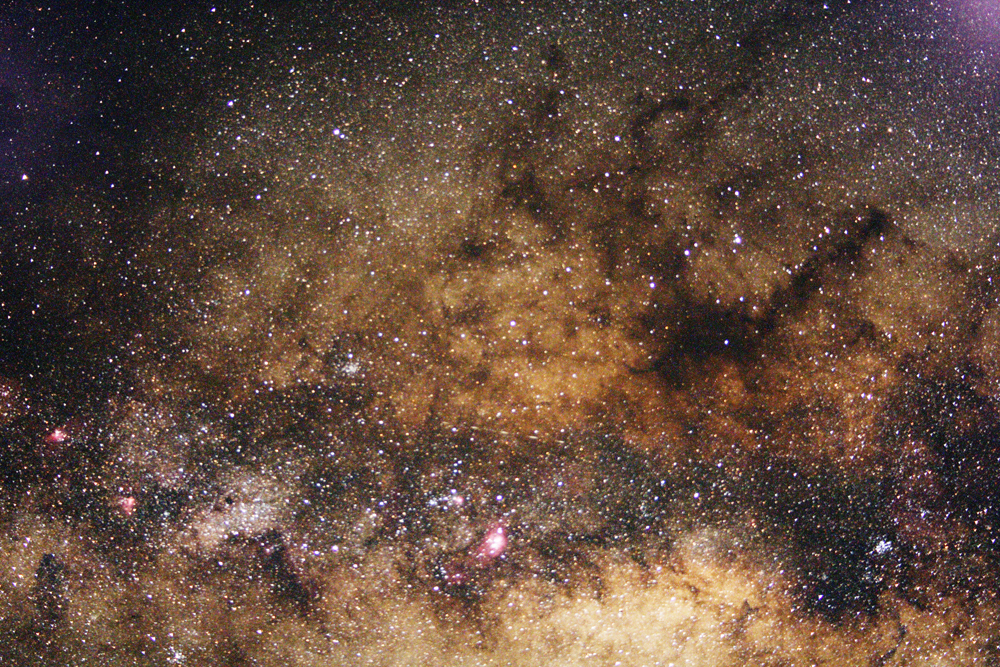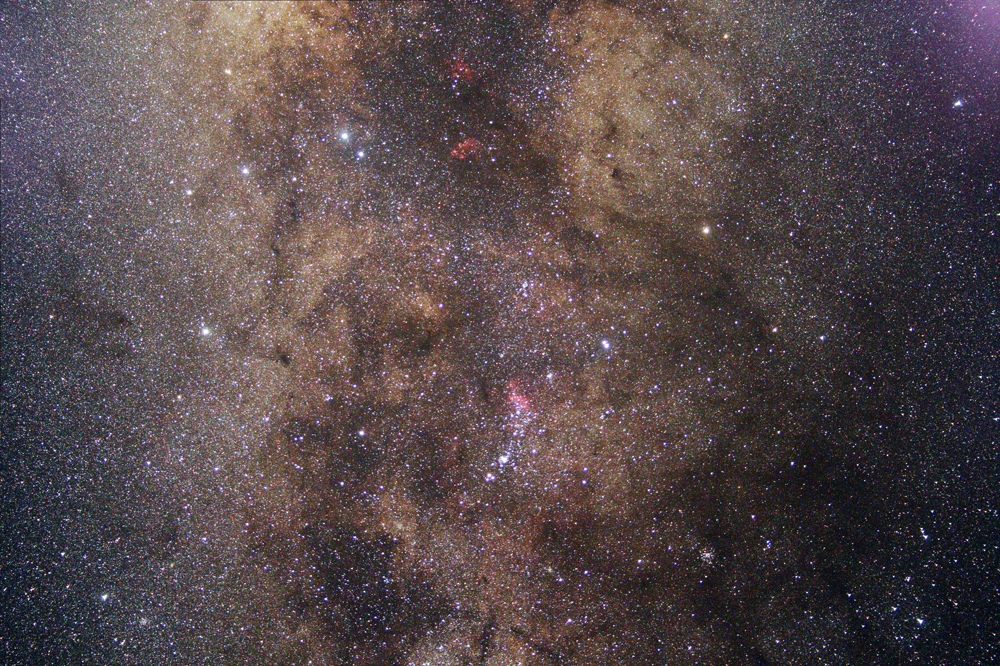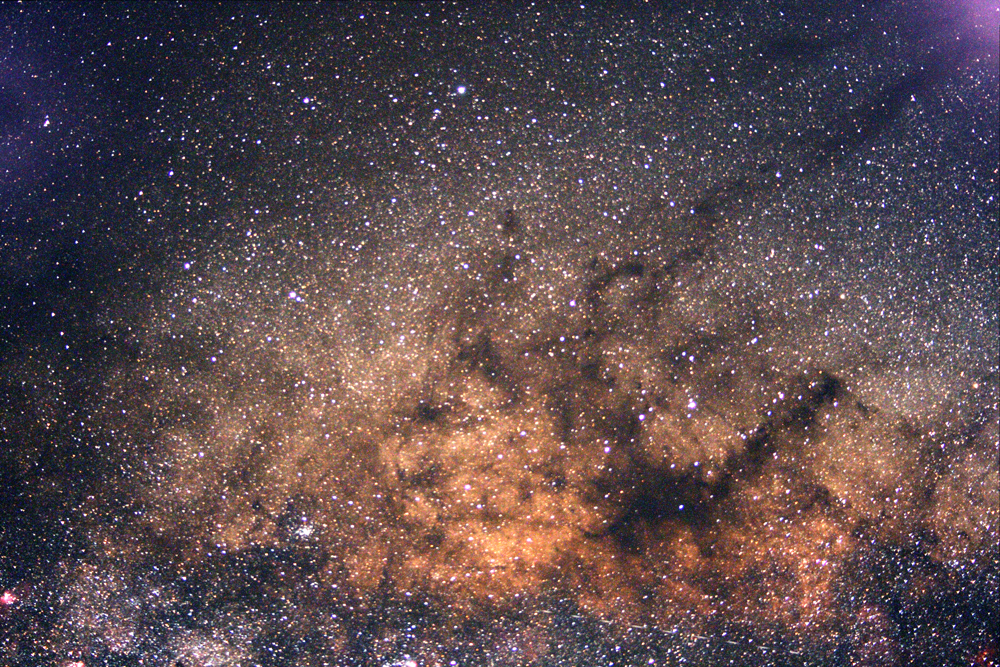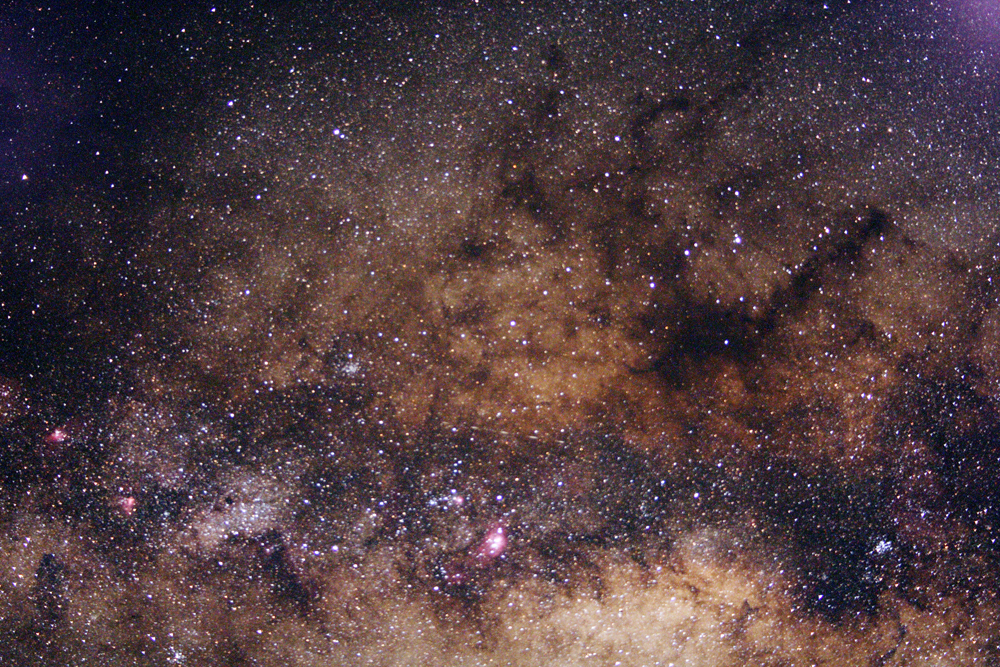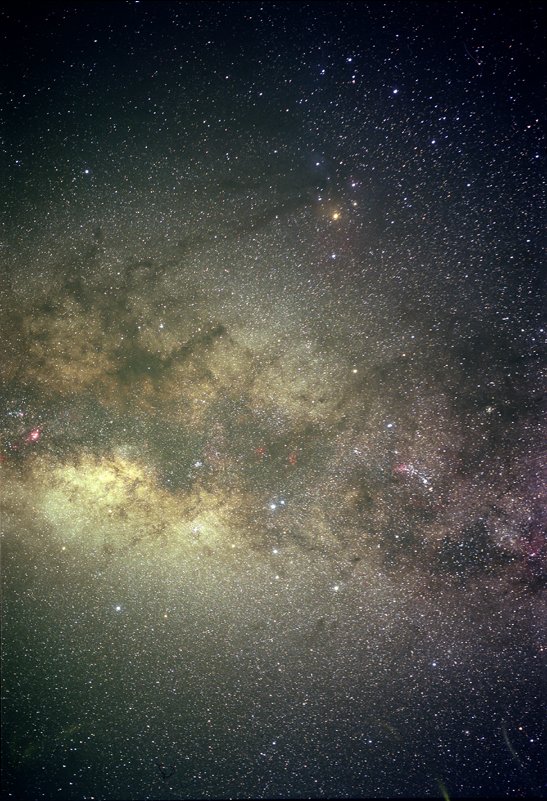
30 minutes exposure, Fuji Super G 400 wide format film. 120mm f/2.8 Minolta lens.

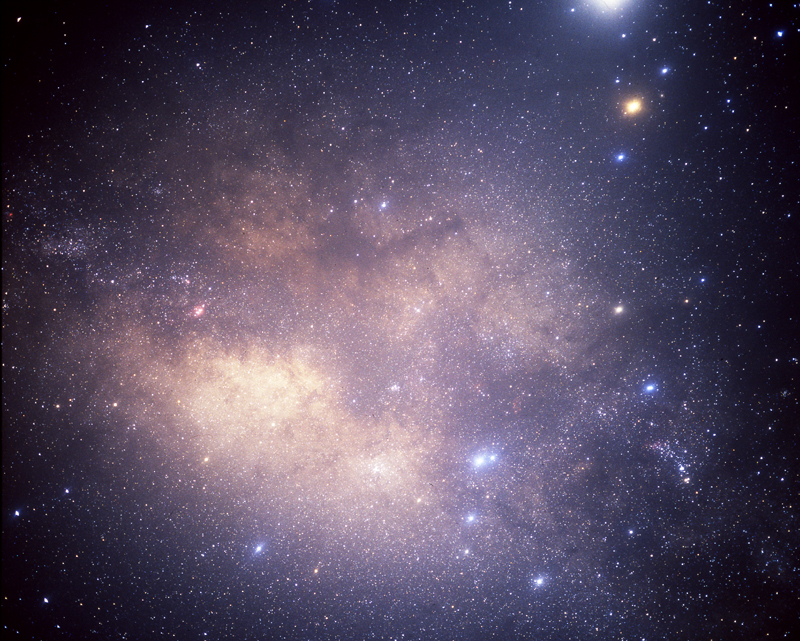
The northern region of Scorpius. The bright star near the centre is the red supergiant Antares. Surrounding Antares is the complex region of bright and dark nebulosity surrounding the star rho ophiuchi.
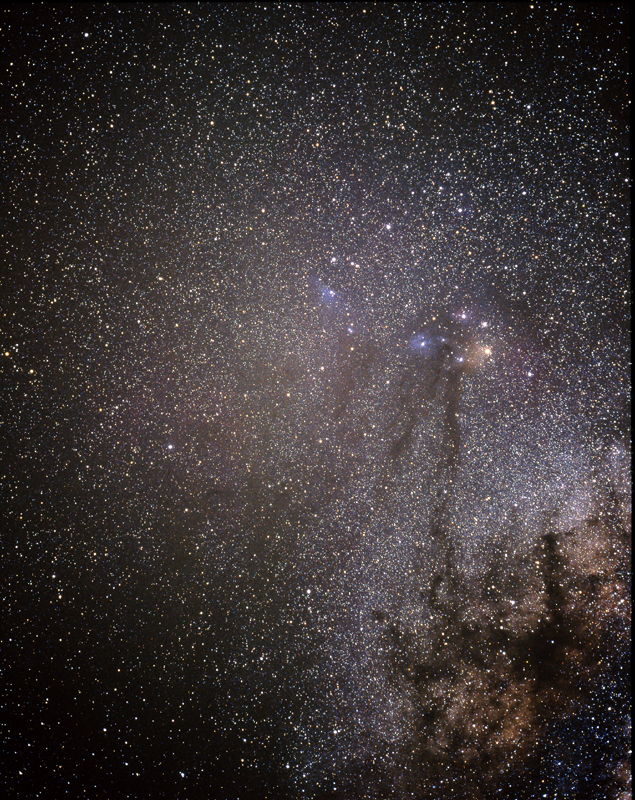

30 minutes exposure, Fuji Super G 400 wide format film. 120mm f/2.8 Minolta lens.
The southern region of Scorpius and western Sagittarius. For Milky Way observers, this is the most spectacular region of the sky. To observe this region close to the zenith from a really dark location is unforgetable!
Scorpius is one of the most magnificent constellations in the sky. It contains many bright stars and it is situated in a very rich portion of the Milky Way. The fish-hook shaped curve of bright stars that form the tail and sting of the scorpion is one of the easiest sights in the sky to recognise. Scorpius contains a wide range of objects of all types, including many beautiful open clusters, bright globular clusters, numerous planetary nebula, several large and bright emission nebulae, and several large dark nebulae. It makes a wonderful counterpart to Orion, and from Australia makes a magnificent sight during the winter nights when it culminates directly overhead. To explore all of its wonders takes many nights of observing. Just a few of the better objects in this region are listed in the table below.
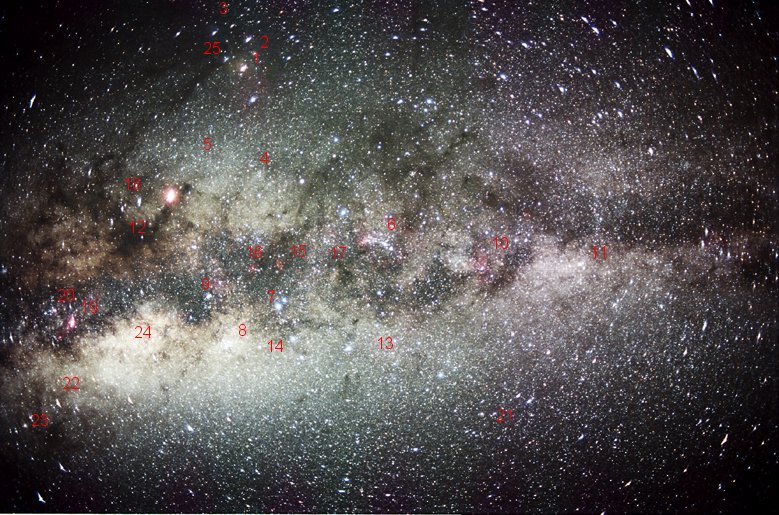
| Number | Name | R.A. | Dec | |
| 1 |
Antares alpha scorpii |
16 29.4 | -26 26 | |
| 2 | M4 | 16 23.5 | -26 32 | Image |
| 3 | M80 | 16 17.0 | -22 59 | Image |
| 4 | M62 | 17 01.2 | -30 07 | Image |
| 5 | M19 | 17 02.6 | -26 16 | Image |
| 6 | NGC 6231 | 16 54.0 | -41 47 | Image |
| 7 |
Shula lamda scorpii |
17 33.6 | -37 06 | |
| 8 | M7 | 17 53.9 | -34 47 | Image |
| 9 | M6 | 17 40.4 | -32 14 | Image |
| 10 | NGC 6188 | 16 41.2 | -48 45 | Image |
| 11 | NGC 6067 | 16 13.2 | -54 11 | Image |
| 12 | Pipe Nebula | 17 33 | -26 00 | Image |
| 13 | NGC 6388 | 17 36.3 | -44 44 | Image |
| 14 | NGC 6441 | 17 50.2 | -37 06 | Image |
| 15 |
NGC 6334 The Catspaw nebula |
17 19.9 | -35 50 | Image |
| 16 | NGC 6357 | 17 24.9 | -34 12 | Image |
| 17 |
NGC 6302 The Bug nebula |
17 13.7 | -37 06 | Image |
| 18 | Snake Nebula | 17 23.5 | -23 38 | Image |
| 19 |
M8 The Lagoon nebula |
18 03.8 | -24 23 | Image |
| 20 |
M20 The Trifid nebula |
18 02.4 | -22 59 | Image |
| 21 | NGC 6397 | 17 40.7 | -53 40 | Image |
| 22 | M28 | 18 24.5 | -24 52 | Image |
| 23 | M22 | 18 36.4 | -23 54 | Image |
| 24 |
M24 The Sagittarius Star Cloud |
18 18 | -18 24 | |
| 25 | rho ophiuchi | 16 25 | -23 28 | Image |
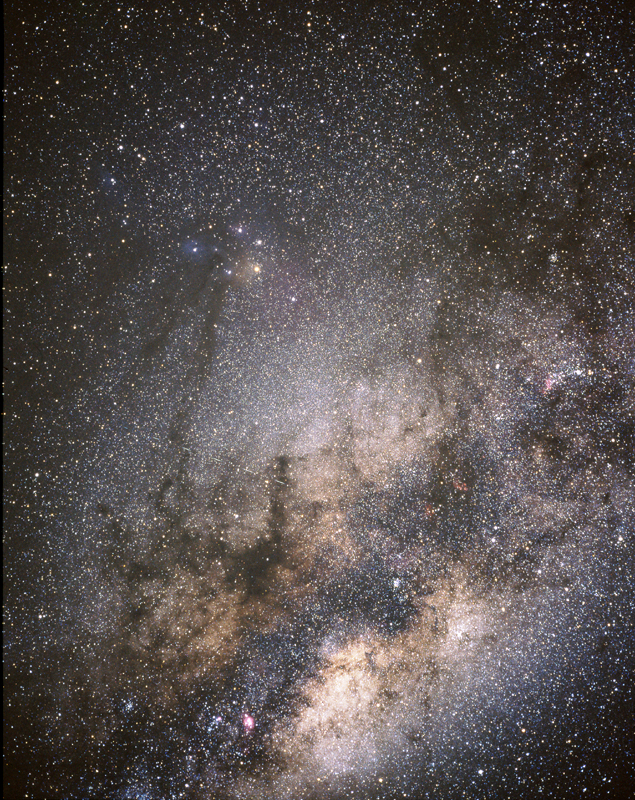
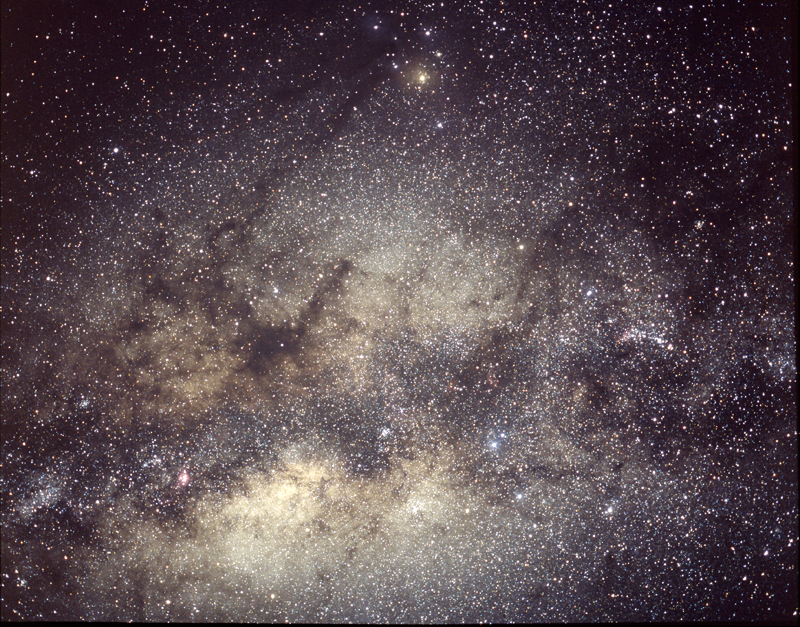
30 minutes exposure, Fuji Super G 400 wide format film. 120mm f/2.8 Minolta lens.
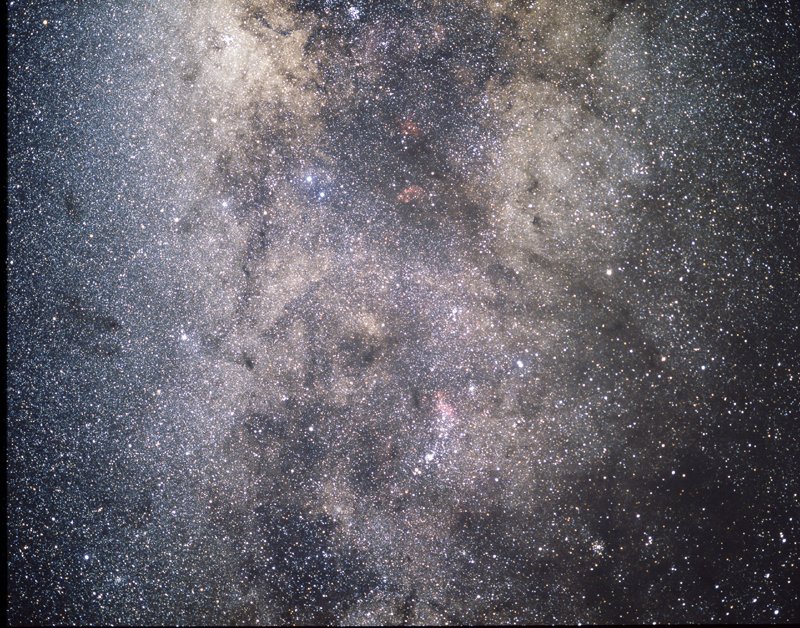
30 minutes exposure, Fuji Super G 400 wide format film. 120mm f/2.8 Minolta lens.
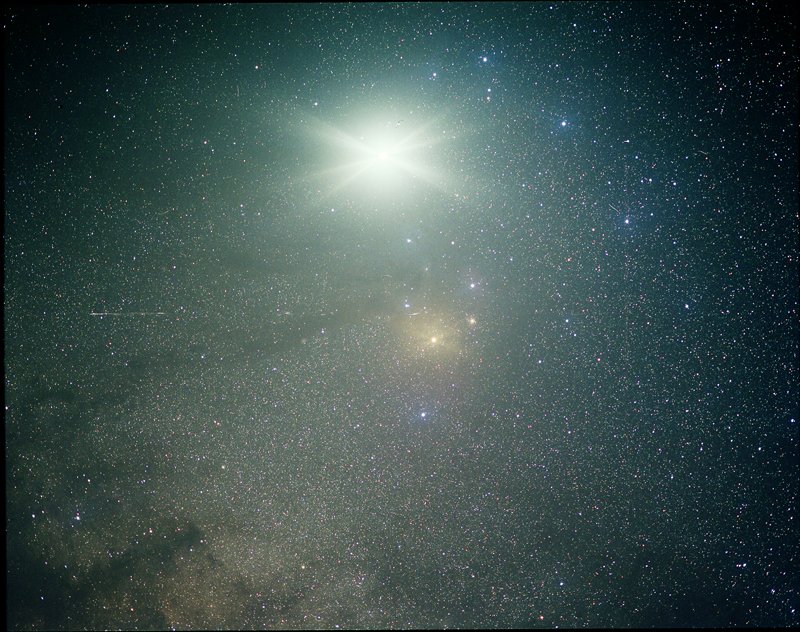
30 minutes exposure, Fuji Super G 400 wide format film. 100mm f/2.8 Mimya lens.
This photograph of Scorpius shows what can happen when you leave a camera unattended during an exposure. While I was inside the dome dew settled on the camera outside! The very bright object is the planet Jupiter.
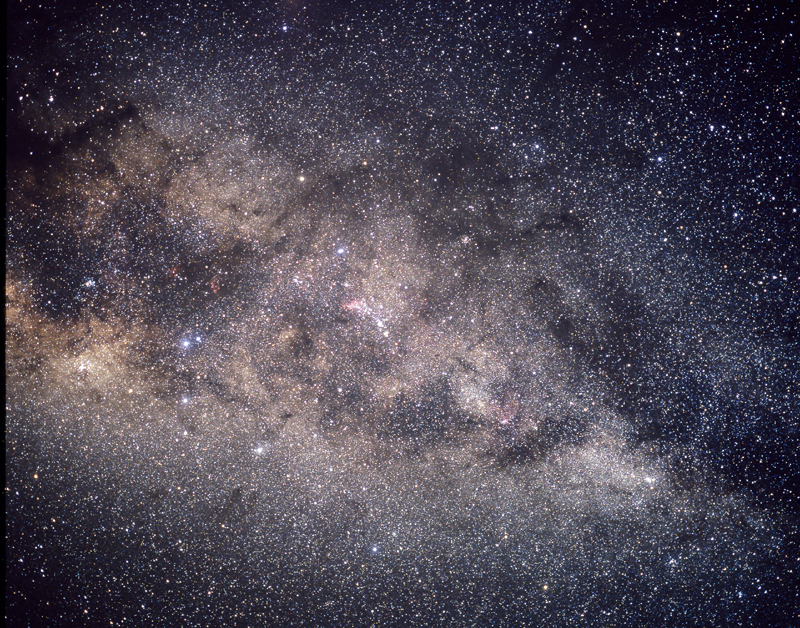
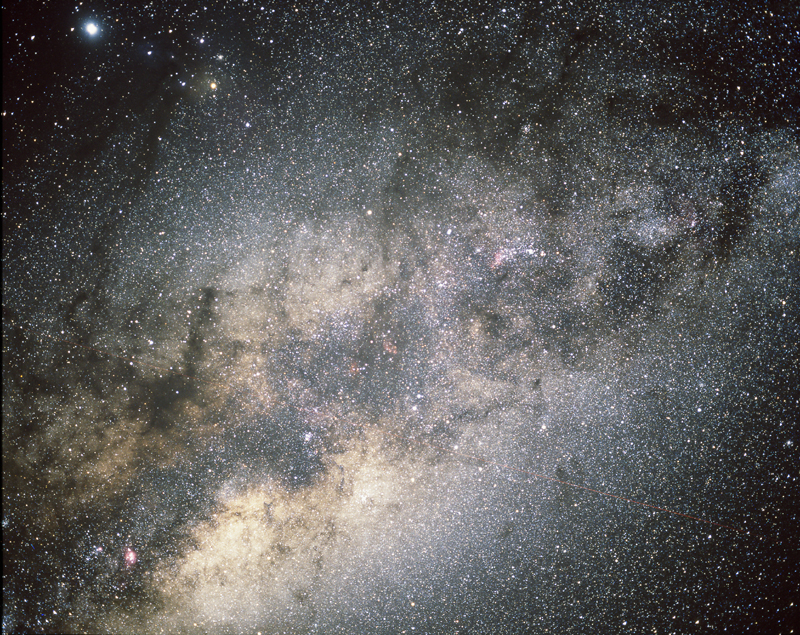
20 minutes exposure, Agfa HDC 400 wide format film. 120mm f/2.8 Minolta lens.
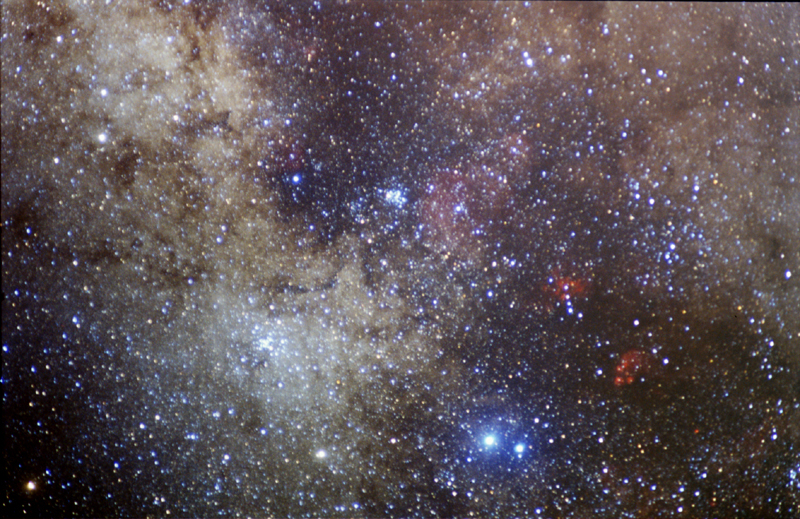
The tail of the Scoprion, one of the more fascinating areas of the sky with any telescope!
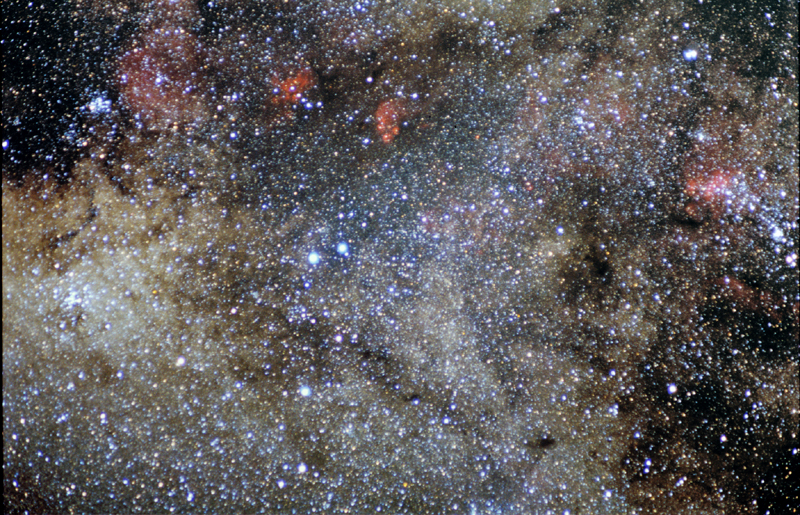
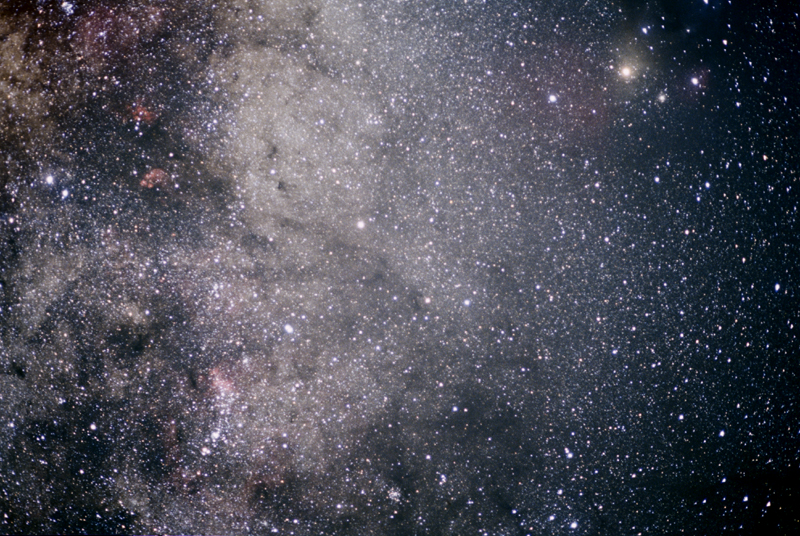
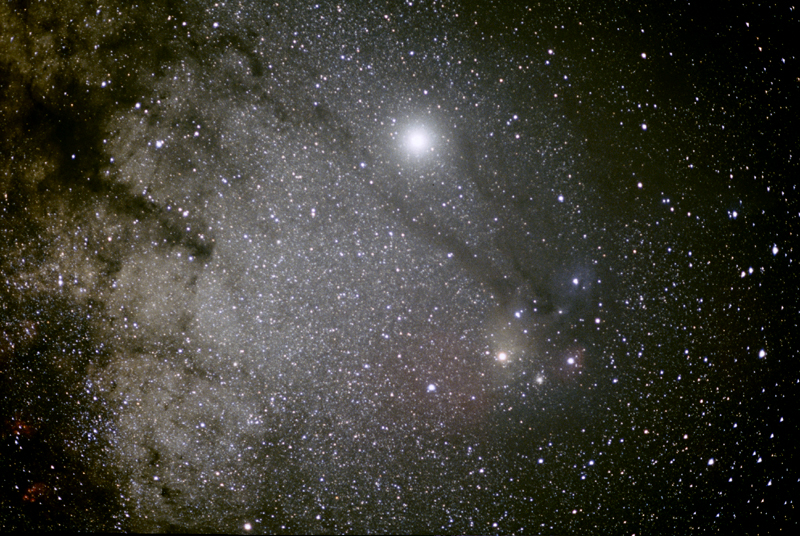
60 minutes exposure, Ektachrome 200 slide film. 85mm f/2 Canon lens.
Close to the bright star Antares, is a very complex region of emission, reflection, and dark nebulae. Although very difficult to observe visuaally, they stand out well in photographs. The very bright "star" is the planet Jupiter.
